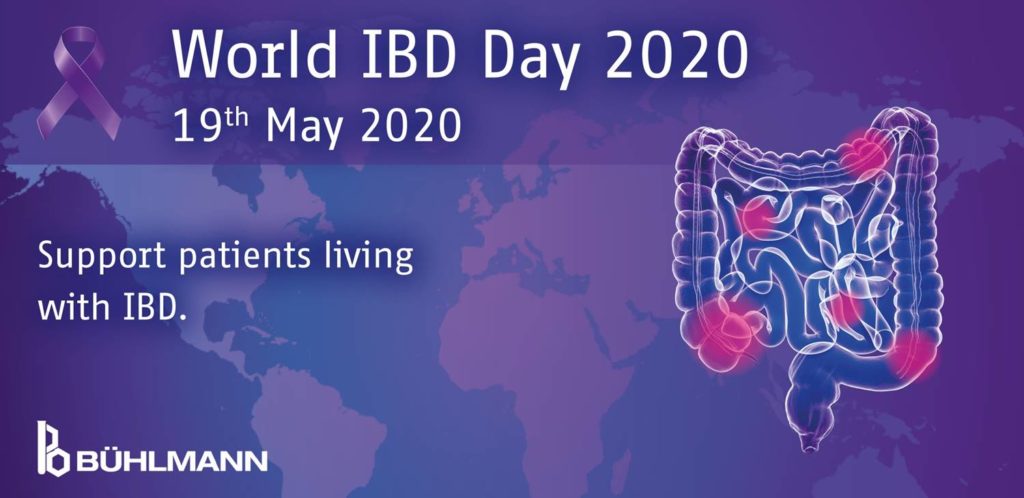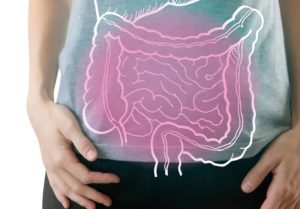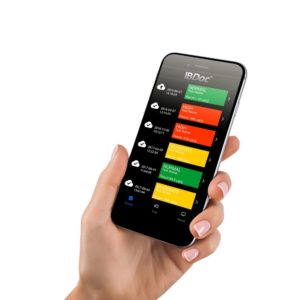Worldwide more than 6.8 million people live with Inflammatory Bowel Disease (IBD) which is characterized by chronic inflammation of the gastrointestinal tract. The highest numbers of IBD patients are observed in North America and Europe with an estimated 2.2 million affected persons in North America and an estimated 0.3% of the European population suffering from IBD (1, 5, 9, 11). In Europe, epidemiological studies suggest both a north-west gradient with more IBD patients in the north and a west-east gradient with more patients in the west. Thereby both, the incidence and prevalence are still increasing (1, 9. 13).
Crohn`s disease (CD) and ulcerative colitis (UC) are the two major forms of IBD, both characterized by inflammation of intestinal mucosa and a chronic, relapsing disease course. Thereby periods with high disease activity and acute symptoms alternate with phases of remission, with slight or no symptoms (14, 15). Ulcerative colitis normally starts with mucosal inflammation at the rectum which extends continuously upwards through the colon. Thereby only the inner lining of the colon is inflamed. In contrast, in Crohn`s disease the inflammation can affect entire intestinal layers and inflammations can occur anywhere in the gastrointestinal tract, from mouth to anus. Thereby inflammation is typically segmental, meaning that several patches of inflammation are interspersed between healthy portions of the gut. The exact cause of IBD remains unknown, although it is suggested that several aspects such as genetic and environmental factors may play a role (13, 14, 15).
What is calprotectin?
Calprotectin is a cytosolic protein particularly present in neutrophil granulocytes. These are specialized cells of leucocytes belonging to the non-specific immune response in the human body and play a major role in inflammatory reactions. Depending on the localization of the inflammation, calprotectin can be found in different body fluids and in serum. When there is an inflammation in the gastrointestinal tract, neutrophil granulocytes migrate from the circulation to the intestinal mucosa. They accumulate at the site of inflammation and calprotectin is released into the intestinal lumen. While feces migrate towards the anus, it gets into contact with calprotectin. This can be measured in secreted stool using different tests (6, 10, 16).
Inflammatory alterations in the intestine, as they occur in Crohn`s disease and ulcerative colitis, lead to elevated calprotectin concentrations in stool. Thereby the severity of intestinal inflammation correlates well with the concentration of calprotectin in feces. Thus, fecal calprotectin is an ideal non-invasive biomarker to identify intestinal inflammation throughout the gastrointestinal tract. It has the ability to distinguish organic disease like IBD from non-organic disorders such as Irritable Bowel Syndrome (IBS) in patients suffering from gastrointestinal symptoms like diarrhea or chronic abdominal pain. For the initial diagnosis of IBD a combination of clinical, biochemical, stool, endoscopic and histological investigations is needed (2, 6, 8, 10, 16).
For what else can we use calprotectin?
After initial diagnosis of Crohn`s disease or ulcerative colitis the intestinal inflammation is treated using different medications. Since fecal calprotectin reflects the inflammatory status of the disease, it decreases as soon as the intestinal inflammation gets better. It was shown that fecal calprotectin not only correlates well with endoscopic disease activity, but also with mucosal healing (2, 4, 6, 8, 12). Thus, measuring calprotectin levels in stool is a good tool to monitor disease activity and assess the treatment success in IBD patients. Therefore, the number of invasive colonoscopies, which are time consuming and uncomfortable for patients, can be reduced for disease monitoring 16.
Most IBD patients experience periods of remission alternating with flares of variable severity. The aim is to maintain clinical remission, since a failure to control inflammation is associated with impaired quality of life as well as worse long-term outcomes. Several studies showed that an increase of fecal calprotectin in patients in clinical remission was associated with an increased risk of relapse. Thereby, it can increase months before a relapse, when patients still experience physical well-being and feel healthy (2, 6, 7, 8, 16).
How is calprotectin measured?
Today, most of the patients collect a sample of stool into a stool collection tube and bring it personally or send it to their gastroenterologists, to the hospital or directly to the labs. Patients receive the results from their healthcare professionals within a few days. The stool sample is stable for up to several days at room temperature. Nowadays, there are specialised stool sampling devices which already dissolve the stool into a buffer, making it more stable and ready to measure the sample in the lab right away without the need to extract the stool manually. Another possibility is to use smartphone based calprotectin home tests which allow patients to measure their fecal calprotectin at their homes. Patients can see their test results directly on their smartphone using an app and healthcare professionals are informed automatically about the performed test. This solution offers a fast, flexible and independent measurement of the inflammatory marker for patients at home without the need for hospital visits. In these days, where patients should rather stay at home because of the current COVID-19 pandemic, such solutions can be very helpful (3, 7, 16).
References
- Burisch, J. et al., 2013, The burden of inflammatory bowel disease in Europe, Journal of Crohn`s and Colitis
- Burri, E. et al., 2012, Fecal calprotectin-a useful tool in the management of inflammatory bowel disease, Swiss Medical Weekly
- COVID-19 ECCO Taskforce, published March 20, 2020
- Hart, L. et al., 2020, Faecal Calprotectin Predicts Endoscopic and Histological Activity in Clinically Quiescent Ulcerative Colitis, Journal of Crohn‘s and Colitis
- Jairath, V. et al., 2020, Global burden of inflammatory bowel disease, Lancet Gastroenterology & Hepatology
- Kostas, A. et al., 2017, Fecal calprotectin measurement is a marker of short-term clinical outcome and presence of mucosal healing in patients with inflammatory bowel disease, World Journal of Gastroenetrology
- Louis Edouard, 2015, Fecal calprotectin: towards a standardized use for inflammatory bowel disease management in routine practice, Journal of Crohn’s and Colitis
- Maaser, C. et al., 2019, ECCO-ESGAR Guideline for Diagnostic Assessment in IBD Part 1: Initial diagnosis, monitoring of known IBD, detection of complications, Journal of Crohn‘s and Colitis
- Mak, W. Y. et al., 2019, The epidemiology of inflammatory bowel disease : East meets west, Journal of Gastroenterology and Hepatology
- Manz, M. et al., 2012, Value of fecal calprotectin in the evaluation of patients with abdominal discomfort: an observational study, BMC Gastroenterology
- Ng, S. C., et al., 2017, Worldwide incidence and prevalence of inflammatory bowel disease in the 21st century : a systematic review of population-based studies, Lancet
- Penna, F.G.C. et al., 2020,Faecal calprotectin is the biomarker that best distinguishes remission from different degrees of endoscopic activity in Crohn’s disease, BMC Gastroenterology
- Rogler, G.et al., 2018, New insights into the pathophysiology of inflammatory bowel disease: microbiota, epigenetics and common signalling pathways, Swiss Medical Weekly
- Torres, J. et al., 2017, Crohn`s disease, Lancet
- Ungaro, R. et al., 2017, Ulcerative colitis, Lancet
- Walsham and Sherwood, 2016, Fecal calprotectin in inflammatory bowel disease, Clinical and Experimental Gastroenterology



